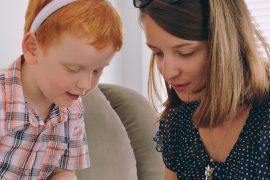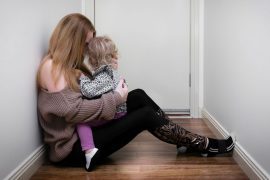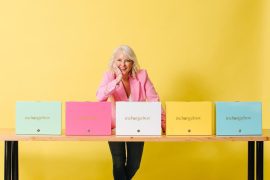And he says, “I’m not getting out.”
So, I say as gently as I can, “I will lift you out of the tub.”
So I’m predictable.
I tell him what’s happening as I’m lifting him out, and he is screaming and kicking and losing his mind.
I say, “You’re so mad that you have to get out. You were having fun and you’re really mad you have to get out of the tub. Is that right?”
He’s screaming and yelling. He’s not even really listening to me.
“[My child] is hearing the empathy in my voice; he’s feeling the calm I have in my body. I have to make sure I get centred, first.” – Tina Payne Bryson
[For co-regulation], we have to make sure we’re calm first. If we’re not, we need to not touch our children’s bodies or open our mouths.We need to say, “I need a minute to calm down” and to regulate ourselves first, because if we want to be the haven in the storm, we can’t be the storm. So we have to calm our internal storm first.
As I’m lifting him out, I’m saying, “You’re so mad bath time is over.”
I wrap the towel around him and I say, “You can cry if you need to cry. It’s okay to have big feelings and be upset. I’m right here with you.”
“I’m giving [my child] the opposite message of what we do a lot in our culture, which is to say, “You go calm down and when you’re ready to be nice, I will be in relationship with you.” “- Tina Payne Bryson
I want my kids to know from repeated experience that at their worst, that is when they need me the most. And I will be there for them at their worst.
That’s what I want in my relationships.
I want my husband to say, “At your worst, I will still show up for you.”
That’s what we all need. In that moment, my son is crying I’m saying “no” to a behaviour. “You can’t stay in the bathtub.” But I’m saying “yes” to whatever you feel and however you’re going to express it.
And I can handle your big feelings. I’m going to help you get regulated again. I’m going to co-regulate with you. Then, you’re going to learn that you can handle your big feelings. And, you’re going to learn how to calm your own nervous system by reaching out to someone else, or if you’re alone, how to do it.
And here’s why. Here’s the science. Just like muscles, if I lift weights over and over, if I do reps, my muscles get stronger. That’s how the brain works when it comes to regulation.
So what happens, is if we give our kids multiple repeated experiences of going from a falling apart, dysregulated state back into a regulated, calm receptive “Yes Brain” state, then their brain learns how to do it for themselves.
“Co-regulation is what teaches kids how to self-regulate.” – Tina Payne Bryson
We cannot spoil our kids with too much attention, too much affection, too much co-regulation, too much love.
What gets in the way is if we don’t have good boundaries.
I would say that firm boundaries, high expectations that we clearly communicate to our kids – and there are 60 years of research that support this – that having firm and good boundaries and expectations, and being completely loving and present and nurturing and comforting should go together.
If you’re just about boundaries and expectations, and rules and discipline, they’re not going to be as receptive to learning.
The way we get them to embrace those things and learn how to say “no” and how to put their brakes on, is by having them in receptive states that come from those connections and that co-regulation.
Watch full interview here:
Stay tuned for our next segment, where Tina Payne Bryson talks about the scientific support for gentle parenting.
Originally published here.
Sarah R. Moore is an internationally published writer and the founder of Dandelion Seeds Positive Parenting. You can follow her on Facebook, Pinterest, and Instagram. She’s currently worldschooling her family. Her glass is half full.










